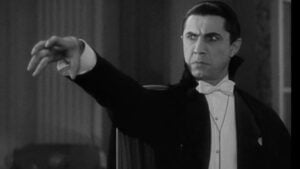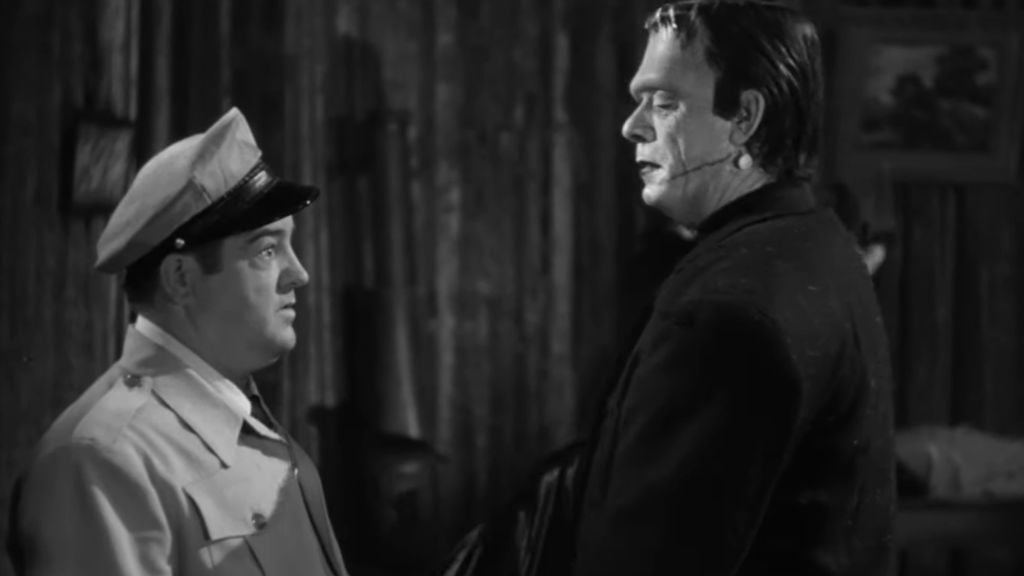From Dracula to the Creature: Why Universal Monsters Still Own Halloween


When it comes to Halloween, nobody does it quite like Dracula, Frankenstein, or the Wolf Man.
Sure, we’ve got modern monsters and endless reboots, but if you’re asking me, the OG Universal Monsters are still the ultimate icons of Halloween horror.
And I mean the real classics — Bela Lugosi’s hypnotic Dracula, Boris Karloff’s unforgettable Frankenstein, and Lon Chaney Jr.’s tortured Wolf Man.
These films didn’t just scare; they enchanted.
There’s a reason I’ll take Lugosi’s rich accent over any sleek modern vampire — it’s the way he commanded a scene, using just his voice and presence to send chills down your spine.
And when it comes to the Wolf Man, there’s a tragedy in Lon Chaney Jr.’s performance that still makes you feel for the man behind the beast, even as he transforms into a snarling, feral creature.
More Than Just Monsters
But let’s not forget the other legends that complete the Universal Monsters lineup.
The shuffling terror of the Mummy brings a kind of slow, inevitable dread, evoking a haunted past that always seems to catch up with you.
The Creature from the Black Lagoon taps into a primal fear of the unknown lurking just below the surface. while the Invisible Man brings a uniquely sinister chaos with his maniacal laughter and unseen presence.


Even when these monsters ventured into comedy territory — like in Abbott and Costello Meet the Mummy or Abbott and Costello Meet Frankenstein — they didn’t lose their edge.
Instead, they showed their versatility, proving that they still commanded the screen, whether in horror or humor.
Together, these monsters laid the foundation for everything we associate with Halloween horror, setting the standard for atmosphere, mystery, and those spine-tingling moments that make us double-check the shadows.
When TV Pays Tribute
TV has had its fair share of monstrous heavy-hitters, too, but none of them would be what they are without Universal’s creature squad paving the way.
Take Supernatural, for example, a show that built an entire universe out of monster-hunting and creepy lore.
Yet it’s episodes like “Monster Movie,” where they directly nod to the Universal icons, that feel the most memorable.
Watching Sam and Dean face down a black-and-white Dracula, complete with cape, fog machine, and old-world accent, was the show’s ultimate tribute to the classics.
In a hilarious twist, Dracula even orders a pizza and signs the receipt as “Dracula,” blending his timeless persona with modern-day quirks.
Moments like these remind us that Universal’s monsters don’t need reinvention — they just need a killer entrance and a touch of humor.
They bring the kind of timeless horror that doesn’t rely on jump scares or excessive gore but on atmosphere, mystery, and those iconic silhouettes emerging from the mist.
Bela Lugosi set the standard for the seductive, charming villain who could be deadly with just a look.
Without him, we might not have half the vampire bad boys on TV, from Spike in Buffy the Vampire Slayer to Damon in The Vampire Diaries or even Laszlo in What We Do in the Shadows.
There’s a timelessness to Lugosi’s Dracula that no other vampire quite captures; he brought sophistication and mystery, making Dracula as mesmerizing as he was terrifying.
Lugosi didn’t need blood splatters or gruesome special effects — his voice alone made you want to draw the curtains and clutch your garlic.
He gave us a Dracula who wasn’t just a monster but an elegant predator, a legacy that still echoes in every charming vampire who graces the screen.
Frankenstein’s Monster, on the other hand, set the stage for the tortured antiheroes we see today- characters who wrestle with their darker sides.
You can spot echoes of his struggle in series like YOU, with Joe Goldberg’s conflicted morality, or The Boys, where characters grapple with their monstrous impulses under the guise of being heroes.
The original creature didn’t just lumber around with outstretched arms; he struggled with rejection, loneliness, and his place in a world that feared him.
That kind of tragic horror has become a staple in modern storytelling, whether it’s the conflicted anti-hero or the monster who just wants to be understood.
Universal’s version of Frankenstein’s Monster wasn’t just a hulking brute; he was a reflection of human suffering, which is why he still resonates today.
Lon Chaney Jr.’s portrayal of the Wolf Man brings to life the classic tale of struggle, loss, and inner demons.
You can’t help but feel for him, even as he’s transforming into something feral and uncontrollable. No modern monster captures that level of tragic horror quite the same way.
His transformation scenes — primitive as they may seem by today’s standards — conveyed the agony of losing control and becoming something you feared.
When you watch The Wolf Man, you’re not just seeing a monster story; you’re witnessing a man fighting against the beast within, a theme that horror keeps coming back to.
It’s no coincidence that werewolves are still a staple in TV shows like Teen Wolf and The Originals, where the struggle to balance humanity and savagery remains a central conflict.
The Mummy’s foggy, shuffling presence captures the creepy ambiance that TV horror continues to tap into.
From American Horror Story to Stranger Things, today’s horror series borrow from that old-school atmosphere that Universal perfected.
The Mummy’s eerie silence and ancient curse evoke a kind of dread that doesn’t rely on speed or gore but on the slow, inevitable march of doom.
These images persist because they’ve become part of our cultural shorthand for horror.
When you think of a haunted graveyard, a castle on a hill, or fog creeping across the ground, you’re drawing on the visual language established by those early monster films.
Halloween Wouldn’t Be the Same
So, as you dive into your Halloween marathons, don’t forget the legends who started it all.
For me, it’s Bela’s Dracula, Lon Chaney Jr.’s Wolf Man, and the eerie, timeless monsters that define horror.
Whether you’re queuing up Supernatural for the umpteenth rewatch or throwing on a classic monster flick, these originals are what Halloween is all about.
Some things never go out of style, and the Universal Monsters are right at the top of that list.
They didn’t just set the stage — they built it, and they’re still the main act, reminding us why Halloween just wouldn’t be the same without them.
Which Universal Monster Is the Ultimate Halloween Icon?
The post From Dracula to the Creature: Why Universal Monsters Still Own Halloween appeared first on TV Fanatic.
Source: TV Fanatic
Recent Posts
Here’s The Guitar Riff MIKE MCCREADY Couldn’t Sell To The Prince Of Darkness: “OZZY Just Wasn’t Into It”
"I should've probably done a really good job of recording it." The post Here's The…
What Tariffs Really Mean For BMW Prices and How the Brand Might Move Forward
It’s in the news no matter where you look: tariffs are (again) officially coming to…
M4 MacBook Air missed out on one of Apple’s latest hardware trends
In the past year, Apple has had an interesting trend across its new hardware releases:…
LORDI’s MR. LORDI Sounds Off On The Current Music Industry: “Digitalization Is The Root Of All Evil”
"And I refuse to be part of that. I have to be, but in my…
Ryan Coogler Wants Denzel for Black Panther 3 As Much as You Do
Whenever Marvel gets around to the next solo Black Panther movie, Coogler wants the acting…
These iPad accessories give you 98% of the experience for a quarter of the price
As someone who has used their iPad Pro as their main computer for about seven…